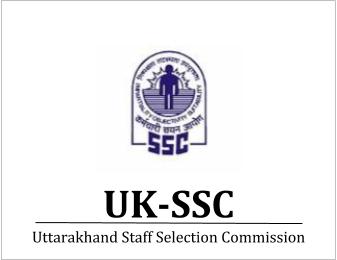Uttarakhand SSC Sample Papers : Set-A (Series-19-202)

Uttarakhand SSC Sample Papers : Set-A (Series-19-202)
1. The most rigorous test of liquidity is –
(A) Current ratio
(B) Quick ratio
(C) Absolute liquid ratio
(D) All of the above
2. A brief explanation of the transaction is called –
(A) Summarising
(B) Particular
(C) Narration
(D) Information
3. Stock turnover ratio is –
(A) Liquidity ratio
(B) Profitability ratio
(C) Solvency ratio
(D) Activity ratio
4. Which of the following is not the technique of capital structure analysis ?
(A) Trading on equity
(B) Capital gearing
(C) Capital budgeting
(D) Cast of capital
5. Receipts and Payment account is a –
(A) Personal account
(B) Real account
(C) Nominal account
(D) None of these
6. Job costing is used in –
(A) Textile mill
(B) Paper mill
(C) Chemical mill
(D) Printing press
7. The scope of which is wider –
(A) Internal control
(B) Internal checking
(C) Internal audit
(D) None of the above
8. Index cost of acquisition is related to –
(A) Long term capital gain
(B) Short term capital gain
(C) Income from Business
(D) Income from other sources
9. Cost of depreciation fund is the –
(A) Explicit cost
(B) Opportunity cost
(C) Average cost
(D) Equity cost
10. Trading Account is a –
(A) Personal account
(B) Real account
(C) Nominal account
(D) None of the above
11. Under annuity method the amount of depreciation is –
(A) Fixed for all years
(B) Increasing every year
(C) Decreasing every year
(D) Fluctuating from year to year
12. If the shares are forfeited, the share capital account is debited by –
(A) Face value of shares
(B) Paid up value of share
(C) Called up value of share
(D) Issue price of share
13. Which of these accounts show debit balance ?
(A) Machinery account
(B) Sales account
(C) Capital account
(D) All of the above
14. Which of the following is non-current asset ?
(A) Stock
(B) Good will
(C) Prepaid rent
(D) Accounts receivable
15. Copyright is an example of –
(A) Tangible assets
(B) Intangible assets
(C) Wasting assets
(D) Fictitious assets
16. On dissolution of a firm, an amount realised from the unrecorded asset is credited to –
(A) Revaluation account
(B) Realisation account
(C) Cash account
(D) Capital accounts
17. A decrease in the provision for bad and doubtful debts results in –
(A) Increase in net profit
(B) Increase in equity
(C) Decrease in net profit
(D) Both A and B
18. Which of the following concept shows difference between amount of receipt and right to receive an amount ?
(A) Matching concept
(B) Going concern concept
(C) Accrual concept
(D) Realisation concept
19. Sacrificing ratio is calculated in the case of –
(A) Retirement of a partner
(B) Death of a partner
(C) Insolvency of partner
(D) Admission of a partner
20. Only Personal and Real Accounts are shown in –
(A) Balance sheet
(B) Trading account
(C) Profit and Loss account
(D) Trial balance
21. If the net profit earned during the year ` 80,000 and debtors have increased during the year by ` 15,000, the cash from operation will be –
(A) ` 80,000
(B) ` 65,000
(C) ` 95,000
(D) ` 40,000
22. A and B are partners sharing profits in the ratio of 2 : 3. They admit C for ¼th share in business. The sacrificing ratio of A and B is –
(A) 3 : 1
(B) 1 : 4
(C) 2 : 3
(D) 1 : 1
23. A person deposits LIC premium of ` 10,000. He can claim –
(A) Deduction U/S 80C
(B) Exemption U/S 10
(C) Both A and B
(D) None of the above
24. Accounting Standards Board of India was established in which year ?
(A) 1970
(B) 1972
(C) 1973
(D) 1977
25. Preparation of Final Accounts falls in –
(A) Book keeping
(B) Accounting
(C) Auditing
(D) None of the above
26. Which of the following does not come under the purview of book-keeping ?
(A) Financial transactions
(B) Recording
(C) Posting
(D) Analysis and interpretation
27. While deciding about the divisible profit which of the following facts must be considered ?
(A) Current depreciation
(B) Arrear of depreciation
(C) Capital profits
(D) All of the above
28. Destruction of vouchers by auditor is –
(A) Civil liability
(B) Criminal liability
(C) Other liability
(D) None of the above
29. LAN stands for –
(A) Large Area Network
(B) Local Area Network
(C) Long Accurate Network
(D) Lay Access Network
Click Here To Download full Question Paper
Courtesy:UK-SSC


